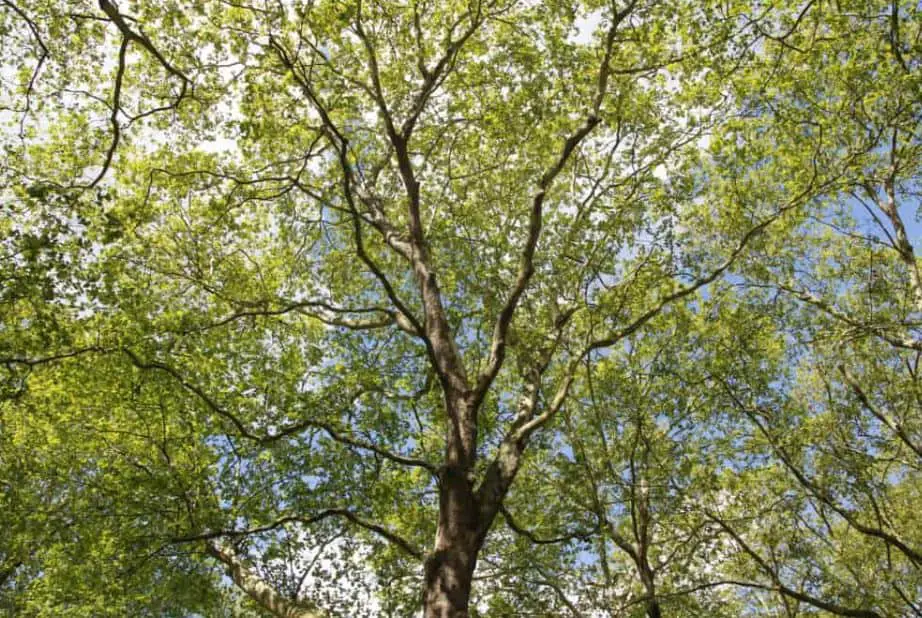Messy tree poop frequently disqualifies a perfect specimen from a landscape design, and for a good reason. In addition to being unsightly and sometimes hazardous, tree droppings may stain houses, automobiles, and pavement and generally add to garden upkeep. If that applies to you, read about eight of the messiest trees. Most people would like to avoid planting these “dirty trees” for these reasons.

- Poplars (Populus spp.) are vulnerable to various ailments and pest insects. Poplar branches are weak structurally and often break when bad weather, such as wind or snow, shows up. No homeowner wants the poplar’s root system to encroach on sewage pipes or cause walkways to crumble. Several species, particularly cottonwoods, release tiny white seeds that clog gutters, screens, and air conditioners and cause misery for those who suffer from seasonal allergies.
- Large thorns on certain types of honeylocust (Gleditsia triacanthus) make them potentially dangerous to handle. While the tree may be found in thornless variants (G. triacanthus var. inermis), shoots from these grafted plants often generate thorns. Also, the tree produces a tonne of big, messy fruit. Honeylocusts are subject to diseases and insect pests, much as poplars are.
- Weeping willows (Salix babylonica) are known for their dramatic habit, but the trees are rather delicate and prone to storm damage. Weeping willows often shed branches even when the weather is quiet. Moreover, these trees are prone to canker infections, which promote deadfall.
- While endemic to most of the United States, the black locust (Robinia pseudoacacia) can potentially spread to grasslands. The black locust spreads by suckers, which have a strong root system and may engulf surrounding gardens. Black locust, another prickly tree, also yields much untidy fruit. It is susceptible to several illnesses and insect pests.
- Catalpa speciosa, often known as the Northern Catalpa or Catawba Tree, has large, perfectly formed heart-shaped leaves. Together with long, thin seed pods and fluffy white blossoms, it also produces catalpa caterpillars, who sadly make hundreds of them their home. When the blooms, seed pods, and those caterpillars have fallen, the catalpa, initially attracted to the sight, is a mess.
- Specifically for its stunning autumn foliage, the sweet gum tree (Liquidamber styraciflua) is utilized as an ornamental tree. Yet the tree also produces hard gum balls, spiky balls that are challenging to rake away before the beautiful fall leaves. This potentially unpleasant fruit, which is hard and pointed enough to pierce even the thickest gardening gloves or boots, may be produced in large quantities by the tree. To make matters worse, the fruit is difficult to compost.
- The Magnolia grandiflora tree is a symbol of the South. It is hard to imagine this tree, which has enormous, glossy green leaves and beautiful, fragrant white blooms in the spring, as a rubbish tree. The tree tends to lose little branches and, of course, those crisp, waxy leaves, so after the petals fall, you are left with a mess that is hard to clean up. There are also hard cones, which take longer to decompose in compost.
- Another tree that has to be avoided is the black walnut (Juglans nigra). It releases a poisonous substance that may wipe out nearby flora. Most of the tree’s components, except the nut, have a distinct perfume characterized as intense and may or may not be appealing to the grower. Like many of the plants mentioned above, it also produces fruit that is difficult to clean up.
Finally, although it may seem tempting to plant fruit trees, it is preferable to select ornamental species that are either unproductive or grow little fruit eaten by birds, minimizing any potential problem.
Are Crabapple Trees a Mess?
Crabapples are excellent pollinators of fruit trees, so much so that commercial fruit farmers often include them in their plantations to fill in pollination gaps. In the home garden, crabapples are often planted because of their stunning springtime blossom displays. Crabapple trees also provide good habitat for birds, small animals, and their branches.
Similarly, some argue that there is a negative impact on every advantageous characteristic of the crabapple. The mess from crabapples may be extreme. The landscape will be blanketed in a blizzard of petals after those lovely blossoms have fallen, which, while it does not remain long, may become slick, blow, and attach to other surfaces. So you will have a pile of decaying fruit that only the yellow jackets will consume if neither you nor the other wildlife eats the crabapples.
Last Word on Adding Trees to the Landscaping
Messy trees may suddenly drop their fruit, leaves, or needles, making a large mess that might harm turf grass, planting beds, automobiles, and other manufactured surfaces. Some of these “dirty trees” may also scatter seeds, resulting in little trees all over your landscape.
There is often a positive to every drawback, and unkempt trees are no exception. You will need to dedicate yourself to regular raking and cleaning, but the presence of some of these untidy trees creates a more varied landscape that serves as a home for animals.

